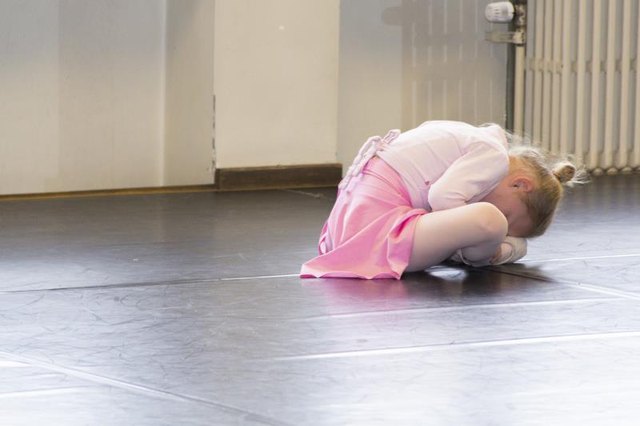
Stretching is important for overall flexibility, but it is vital to your success in ballet. Poorly stretched muscles are prone to injury and do not move as well. A daily stretching routine may help you achieve perfect form with less pain and frustration. Always warm up first, then settle into your stretch routine. Try running through the five positions with your feet and arms several times on each side, and do a few gentle tendus, releves, grand battements and arabesques just to get the blood flowing.
Torso
Stretch your torso first, because most other stretches require back and core flexibility. Stand with your feet parallel, then bend forward with a flat back until your hands touch the ground. Slowly roll back up. Repeat several times, increasing the length of time you spend at the bottom of the stretch each time. Stretch your sides by reaching over your head with one straight arm at a time.
Arms
Think long and lean when stretching your arms. Reach straight out in front of you, to both sides, behind you and over your head, extending your reach as far as you can without leaning. Keep your shoulders down from your ears, and remember to keep your head high and level. Do a few arm circles, making the circle larger with each rotation. The more you stretch your arms now, the less you'll have to think about reach and position when you're dancing.
Butt/Hip Flexors
Your butt and hip flexors give your legs their range of motion, and you'll never achieve the perfect grand battement or arabesque if they're tight. Lie on your back with your knees bent. Place one foot on top of the other knee, turning your top leg out, and pull your bottom leg in toward your chest. Hold it until the tension is gone, then repeat on the other side.
Legs
Your legs must be expressive when you dance, and keeping them flexible allows you to think about timing and choreography instead of form. Stretch your hamstrings one at a time by propping your leg up on the barre -- keep your back straight and your leg in line with your hip. Stretch your quads by standing on one leg and bending your other leg, foot behind you. Pull your free foot as close to your bottom as you can, keeping your knees in line. For another stretch, sit on the floor with the soles of your feet together, and lean forward from the hips, keeping your back straight. Hold until the tension releases, then round the back and reach as far forward as you can.
Splits
Splits won't necessarily help you kick higher, nor will they perfect your leap. But they are the ultimate demonstration of lower-body flexibility, and even working up to them will improve your overall form. Go slowly, and never force a split. Keep your front knee pointed up and your back knee pointed down in the front split. Or, in the case of side splits, keep both knees pointing up or slightly forward. If you experience hip pain, try tilting your pelvis more forward.





No comments:
Post a Comment